10 Best Indoor Plants to Grow in Water
Whilst the majority of people use water as a medium for propagating plants, there is no reason why this can be a long term growing medium. And it is cheaper too! Since you won’t need to buy bigger planters and more soil when plant increase in size.
We've compiled a list of easy to grow plants that thrive in water, without the need of a complicated hydroponics system. Plus, you can pot them in potting soil whenever you want to change the look and feel your décor.

Here’s our list of best plants to grow in water:
- Spider Plant
- Heart Leaf Philodendron
- Split Leaf Philodendron
- Delicious Monster
- Pothos or Devils Ivy
- Chinese Evergreen
- Arrowhead Plant
- Lucky Bamboo
- Prayer Plant
- Begonia
How to Grow Plants in Water?
There are a few things you need to consider before growing in water. The factors to consider are similar for growing plants in potting soil or outside in a garden. These Include light, fertilising and temperature. Let's explore these more:
- Light: It is best to check the lighting conditions required by the particular plant you have chosen to grow in water. And to choose a lighting position accordingly. Showing off the bare rootball of your plant is a desirable feature of growing in water. Take note however that using a glass receptacle, will cause the water to heat up in direct sunlight, which will then end up 'cooking' your plants delicate roots. So try avoiding direct sunlight positions as much as possible.
- Fertilising: Soil provides your houseplant with some form of nutrient to grow in. When it comes to growing your plant in pure water, it is of utmost importance that you be sure to fertilise your plant on a regular basis, to avoid malnutrition and a weakened plant.
- Temperature: All plants, like us, prefer consistent temperatures. So be sure to choose a position that will give both your plant the temperature ranges they prefer as well as a consistent temperature band, to avoid their roots getting too cold or too warm.
- Water Rotation: Importantly, just like soil based plants need watering, water based plants require fresh water too! Ideally on a weekly basis. This keeps the water oxygenated and prevents the build up on algae, which deplete oxygen further. Room temperature water should always be used. If the water is too hot or cold, it can lead to shock.
- Water Quality: It is also suggested that you use a water with less minerals in it such as filtered water or rainwater, due to the fact that it contains no chlorine, as tap water does, which can be harmful. Though you can leave your tap water out overnight to allow the chlorine to dissipate.
To read up on the detailed care requirements for specific plants, check out our Plant Care Library.
Which containers are good for growing plants in water?
Growing plants in water can be done in a variety of water-tight containers. Here are some options to think about, along with a few reasons why they can be useful.
GLASS JARS AND GLASSWARE

Almost everybody has a few jars or unused Glassware laying around for that "one day we might need it" project, so why not use them now to grow some amazing cuttings? Alternatively, for something a little unique, head off to a thrift store or antique market to find something vintage or unusual.
- Pros: They often have wide openings, making it easy to fill up with a few cuttings for a fuller display, as well as avoid damaging the roots when removing them from the Jar. You’ll also most likely have a wide variety, meaning you can play around with height and design for an attractive feature.
- Cons: Their large openings are both a pro and a con, especially when a single cutting is displayed, because the plant may slip into the water, making it difficult to keep upright. In addition, a wider opening will cause the water to evaporate much quicker. Algae can also grow on clear glass, which is not harmful to your plants, but can look rather ugly.
VASES

Vases can be a fabulous option as they are available in a variety of materials and colours, making them the perfect addition for matching your interior design.
- Pros: They're made to house plants upright. Vases are often available in seethrough and oblique options. You can thus choose to show off the plant's root system or hide it. Plus, opaque containers are a great way to ensure that water evaporation is slower and that you can keep water temperatures more consistent.
- Cons: If the neck of the vase is wide, you’re more likely to have excess water evaporation or trouble with keeping small cutting upright. Alternatively, if the vase neck is too narrow, you could damage the root system of your plant when removing it from the vase.
TEST TUBES OR BEAKERS

Using test tubes and Beakers can be a fun twist on a science experiment.
- Pros: These are often large and long enough to house a cutting comfortably without causing damage. Besides, they look pretty cool.
- Cons: Frequently, test tubes need an extra wooden stand or a way to stand upright, as they cannot stand upright on their own, which can add to their cost.
If you like the sciency look, consider adding one of our Propagation Vases to your Plant Accessories.
WALL-MOUNTED VESSELS

Since houseplants have had a revival, many quirky accessories and Plant design ideas have come to the fore, especially when it comes to space-saving options. And it seems wall-mounted propagation vases and vessels have become the ultimate must-have addition to any plant decor collection.
- Pros: They look great and can be mounted or hung in a fun and unique way, be it in a cluster or with a single vessel. These Vessels can also create the impression of a living green wall and are the ultimate hanging display if filled up with trailing varieties of plants.
- Cons: Wall Mounted vessels can be a little intimidating when it comes to maintenance. Often you will need to remove them from their hanging display for top-ups and general care, and this for some of us can lead to unnecessary accidents.
Looking for some gorgeous, easy to use Wall mounted Vessels? Consider one of our Stylish Decorative Wall Mounted Vases, for something a little extra special.
RECYCLING

If you are a green warrior at heart, and love recycling such as old milk bottles in creative and reusable ways, this option is for you.
- Pros: They’re convenient and often a fabulous way to get a second life out of old yoghurt tubs and other containers.
- Cons: If you're not a creative kind of person, it can start to look like a recycling depot filled with houseplants, which has the risk of looking a bit tacky.
When to change the Water?
Plants growing solely in water need a little more attention than those grown in potting soil. This has a lot to do with water being a slight more volatile growing medium because of sudden temperature fluctuations and water based bacteria.
Change the water once a week. This help oxygenate the water providing a healthier ecosystem for your plants roots.
If you notice the water turning murky or find Algae growing inside the container, change the water as soon as possible. Algae wont do any harm to your plant, however will rob the plants roots of oxygen.
3 Step Guide to Fertilise House Plants in Water
It's best to use quality organic liquid feed. when fertilizing plant solely growing in water. This is mainly because liquid food is much easier to incorporate into the water medium, whilst organic fertilisers are much gentler and less likely to cause any damage to the plants’ much less robust water roots.
3 Simple Steps to follow when Fertilising Water plants:
- Step 1: Mix the required amount of fertiliser in fresh water according to the instructions on the label. On average, do this every second to third time you change the water, depending on the plant and the frequency of water changes.
- Step 2: Fill each plant container with the Fertliser mixture and allow to stand for up to an hour. This will give your plant enough time to draw up any nutrients it may need.
- Step 3: Empty the receptacle and fill with fresh, clean water. Do not rinse the container as you want some nutrients to remain. However, do not leave the fertiliser in the water, as this can produce a fetid smell after a few days.
TOP TIP: As an alternative to regular liquid fertilisers that can decompose and get smelly, you might consider Fertilisers synthesized for hydroponics. However, these can be more expensive and less widely available than regular fertilisers.
Plants growing in water won't have access to their usual wider range of nutrients required to keep them healthy and strong. It’s thus good practice to feed these plants regularly, especially if you plan on keeping them this way on a semi-permanent basis. Feeding will also provide your houseplant with that much needed boost to keep them thriving.

10 Easy Indoor Plants that can live in Water
1. SPIDER PLANT
The Spider Plant is one of those easy care plants that adds charm to any indoor space. Baring gorgeous ribbon like foliage in pale greens and white, that’ll gently cascade over any planter it is housed in, making it a wonderful addition to a wall mounted display or shelf.
They easily adapt to growing in water! Start with one of the Plantlets that are found dangling off a mother plant. They won't have developed any roots yet. As such, any roots that do start to grow when placed over water will adapt readily with very little effect to the young plant.
Growing Location and Care
It is important to place your Spider Plant where it will thrive best, with a good amount of bright indirect light. This would include an East-facing windowsill or wall, where the plant can receive some soft direct sunlight in the morning and ambient light for the rest of the day.
2. HEARTLEAF PHILODENDRON
The classical Heartleaf Philodendron is the perfect candidate for growing in water. They’ll develop roots extremely quickly, meaning they’ll be able to sustain themselves from the get go. They look fabulous as a single cutting in a glass receptacle, trailing off a shelf, or as a stand-alone arrangement on a table, allowing their deep green, heart-shaped leaves to be the focal point.
Converting a Heartleaf to being grown in water, is done by taking a lengthy cutting that has at least one or two leaf nodes that will be submerged by the water it will be living in. This will assist the plant in developing enough roots that will happily adapt to the watery environment.
For more information on How to Identify a Leaf Node, read here.
Growing Location and Care
As with the Spider Plant, to encourage the roots to develop quickly, it is best to choose a location that receives bright indirect sunlight, which will avoid stressing your Heartleaf Philodendron and avoid letting the water get too hot in the container you have selected. The faster the roots develop the happier and more likely it is for your plant to survive.
3. SPLIT LEAF PHILODENDRON
The Split Leaf Philodendron is an iconic houseplant that is a popular choice to grown in water. They are usually kept in large vases lined with pebbles in various colours. And are prized for their large deeply lobed green foliage and thick robust roots, which make a smashing tabletop display when grown in water.
It is simple enough to convert a potted plant into water with a few important notes. When selecting a plant, be sure to choose one that is healthy from the start, and preferably pushing out new growth. It is then necessary to rinse all the soil off the roots before placing it in water. As any excess soil can introduce microbes into the water which can lead to root rot and an unsuccessful conversion.
Growing Location and Care
This houseplant is definitely one of the most low-maintenance options to consider growing in water. They’ll need a space that receives good ambient light, avoiding direct sunlight and has some relatively decent humidity to ward off any potential pests such as Spider Mite.
4. DELICIOUS MONSTER
The Delicious Monster is another exemplary example of a houseplant that converts well to water, and will happily live that way for some time. As with the Split Leaf Philodendron, the Delicious Monster looks glorious in a large tabletop vase, where its large fenestrated leaves bring elegance and charm to any interior space, be it at home or the office.
Converting a Delicious Monster to water is also straightforward. Be sure to choose a receptacle that is large enough to comfortably house the rootball of the plant you have selected. You can line this with pebbles if you like or leave it empty. Rinse off all the potting soil from the roots, making sure to get as much of it off as possible, to avoid transferring any bacteria into the water, or just ending up with muddy-looking water.
Growing Location and Care
Treat your water-based Monstera as you would any other in potting soil. Provide it with bright filtered light, possibly near an East or West facing Window, where the plant can receive a couple of hours of soft direct sunlight. Though not long enough to heat up the water it is housed in, or to cause any scorching to the foliage.
Read on for more information on Common Symptoms for Plants that Grow in Water.
5. POTHOS OR DEVILS IVY
Devils Ivy is another houseplant that is synonymous with being a good candidate for growing in water. They’ll look elegant housed in any container of choice, be it for a hanging display, tabletop or shelf. Consider the Golden Pothos or Marble Queen Pothos. Alternatively, options like Pothos Pictus and Silver Splash make for eye catching options.
Due to being quite a prolific vining specimen, the Pothos is loved for their fast growth and training habits. Available in a wide variety of options, ranging from bright pops of yellow to plain greens, with a multitude of variations in between.
FUN FACT: Pothos are full of a hormone called Auxin, which helps plants grow and develop roots. Due to this, they are often included with other houseplants in water to encourage faster root development.
Growing Location and Care
What makes the Golden Pothos another fantastic water candidate, is that it will still be as adaptable as it is in soil. Meaning that you can grow it in a variety of lighting conditions from low to bright filtered light, with little to no ill effect. Though note that the less natural light the Pothos receive, the slower they may grow.
6. CHINESE EVERGREEN
For an upright growing houseplant in water, the Chinese Evergreen is a fantastic option. Not only do they come in a variety of leaf shapes, patterns and colours, but also make for a striking tabletop display in a carefully curated vessel, to match your interior decor, be it in the home or office.
When growing Chinese Evergreen in water, there are two options you can take. Either you can select a fully mature plant and unpot it from its substrate, being sure to rinse the roots well to wash off any organic matter. The other option is to start with a stem cutting. Both options will be highly successful, though it is essential to be aware that Chinese Evergreens grown in water tend to grow slower than their soil-based counterparts.
Growing Location and Care
Growing Chinese Evergreens in water can be a little fussy about the type of water they receive. Due to the presence of hard minerals in tape water, such as chlorine, fluoride, and a few others. It is suggested that you use distilled, reverse osmosis or rainwater for these plants, as they contain few minerals, if any, that will affect the plant's health.
Chinese Evergreens grow slowly in water so lower light conditions might lead to unhappy plants. Choose a bright light position, out of direct sunlight. It is therefore best to choose a space that is consistently bright and has an even temperature.
7. ARROWHEAD PLANT
Arrowhead Plants aka Syngonium is fabulous houseplants with an easy-care nature. They are easily identified by the arrow-shaped foliage, bright colour forms and if mature, trailing habit. They’re also marvellous options for growing in water. Adding captivating tropical charm to your interior decor.
Growing Arrowhead Plants in water is best achieved by starting with cuttings. Selecting vines that are 8 to 10cm long, to ensure there are a decent amount of leaf nodes available for the plant to shoot roots from. This also ensures that any roots that are produced will be well adapted to the water it is housed in.
Growing Location and Care
The Arrowhead is an adaptable plant, and will happily grow in a variable range of lighting conditions, apart from complete darkness. Yet, it is advisable to provide the plant with bright indirect light and a warm spot to ensure your plant holds up with its rapid growth habit. Placing your plant in an East facing windowsill or display space will provide your plant with the best lighting conditions to keep it happy.
8. LUCKY BAMBOO
Here is a houseplant that is often used in homes or spaces that follow the practice of Feng Shui as it is thought to bring balance and prosperity to the pace t is present in. Adding balance and elegance to any tabletop display or floating shelf.
Often sold in water, either in a small plastic vessel or presented in a vase with pebbles at the base to keep the stalks upright. The Lucky Bamboo is loved for its ease of care and simplistic appearance. Looking like bright evergreen Bamboo stalks topped off with elegant sprouts of foliage.
DID YOU KNOW? Lucky Bamboo is in fact not a Bamboo at all, even though the stems look akin to it. It is actually part of the Dragon tree clan, aka Dracanea Sandariana, hailing from North Africa.
Growing Location and Care
Lucky Bamboo is easy to look after and will thrive in a brightly lit home or office, out of direct sunlight. Though it will tolerate lower light conditions, yet, will grow much slower if at all in these positions. Lucky Bamboo should be grown in just enough water to cover the root system, as if the plant is too submerged, it may rot. It is also a good idea to rotate the plant every time you check the water level, so that it gets an even amount of light.
9. PRAYER PLANT
Maranatha's are the less fussy cousins of the Calathea clan. It produces the most delightfully attractive foliage, available in several striking forms, that dances with the light when the sun shines. You can also use them to enhance a tabletop display or add a pop of color to a wall-mounted arrangement.
The best way to convert Prayer Plant to water is to do so with cuttings, although you should be aware that it isn't a permanent candidate for water, and at some point it will need to be potted up, to make sure they thrive. You can, however, get a few months of display out of them before that time comes. Imagine them as an ever-changing option in your water "garden" design.
Growing Location and Care
It is quite easy to take care of this beautiful plant in water as long as it is given the right type of water. Prayer Plants require water that is not heavily mineralized, similar to Chinese Evergreens. It is therefore recommended that you keep your cutting happy by using either filtered, distilled or rain water.
Make sure your plant is in a brightly lit area, away from direct sunlight which can cause bleaching, as a lower lit area will cause root production to slow down significantly. Ideally, the plant should be placed on a warm, bright bathroom or kitchen window sill, or in an east-facing location, as this will provide it with the warmth and light it needs. When it comes to fertilizing Prayer Plants, we recommend doing so less frequently, preferably every third water change, as they are sensitive to the minerals in the water.
10. BEGONIA
The diverse leaf shapes, colours, and forms of Begonias make them delightful houseplants. Adding a dynamic jungle feel to your interior decor. Furthermore, they are not only stunning to look at, but they are excellent candidates for growing in water.
It is very simple to grow Begonia in water, practically just a cut stem or a single leaf will do, since their stems are robust and can survive in water quite happily. Though it may take a few months for roots to show, the leaf or cutting will still look highly attractive in your choice of a vessel on a tabletop or part of a shelf display.
Growing Location and Care
Provide your Begonia Leaf or stem cuttings with a bright filtered light position to encourage good root formation. If you can also provide your plant with some higher humidity such as a bright bathroom or near a humidifier, this will highly benefit your plant. Be sure to check in on your cutting regularly, and to do a weekly water change. You will not need to feed your plant in the first few weeks before the roots have developed, though once you do notice them forming, it is advised to start feeding with a dilute solution of fertiliser and has your get more roots you can up the feed.
Common Symptoms for Plants that Grow in Water
Growing houseplants in water can come with its own set of noticeable symptoms as the plant adjusts or is in water for some time. Thus, being aware of these and knowing how to treat them, will help you keep your plants thriving. Below we help identify a few common symptoms and how to treat them.

BROWN LEAF TIPS
There can be a few causes for the tips of the leaves in your water-grown plants to turn brown. The main cause however is generally over fertilisation. This is caused by the salts in the fertiliser being drawn up by the plant and building up in the plant. Once there is too much salt, the plant will try to release it by pushing it out the tips of the leaves, causing these to dry out and turn brown.
The best solution for treating this is to cut back on fertilisation. However, if this issue persists on new growth, even once you've reduced fertilisation, consider the humidity in its surrounds: It may be too dry. Relocating to a more humid position, or spritzing the plant on a regular basis is then advised.
YELLOWING FOLIAGE
Leaves turning yellow is a common symptom in water-grown plants, especially in the beginning stages, and should not be a cause for alarm. Plants that have been newly transferred to water, or are cuttings, will most likely have a few yellow leaves. This is caused by the plant using up its stored resources in these leaves to either produce roots or to acclimate to its new environment. Once the nutrients are used up, the leaf turns yellow and usually drops from the plant.
Another cause of yellowing foliage in a plant that has been in water for sometime, is most likely caused by malnutrition. Yellowing, especially in lower leaves is a sign that your plant is lacking Nitrogen. Regular feeding is required to add this important nutrient, as water alone does not contain it. To help boost your plant immediately, allow it to sit in a diluted fertiliser solution for approximately 24 hours, and in a few days, you should hopefully see an improvement.
MUSHY BLACK ROOTS OR STEMS
This is an immediate sign that rot has set in. This can be caused by a variety of things, depending on whether the plant is mature, or a cutting. Some aspects can prevent this:
- When taking a cutting, always use a sterilised cutting utensil to make sure that you are not spreading any bacteria or disease between plants.
- When watering a mature plant, ensure that you are not just topping up with fresh water, but rather completely exchanging the water, as the more oxygen there is, the less likely you are to have rot set in.
TOP TIP: When taking fresh cuttings, dip the cut end in ground cinnamon, which is a desiccant and antiseptic, protecting your cutting from unwanted disease.
For more tips on Propagation read our 5 Easy Plants to Propagate here.
BLACK OR BROWN SOFT SPOTS ON FOLIAGE
Spotting on the foliage in water can most likely be caused by a fungal or bacterial infection. The best way to deal with this is to firstly provide your plant with good air circulation. Open a window for a few hours of the day or switch on a rental fan.
Remove all infected leaves, however, do not compost these, it is better to throw away fungal-infected foliage to avoid spread. Finally, you can treat the issue with a fungicidal or Copper-based soap.
PALE FOLIAGE
This is indicative of either too much light or a lack of nutrients. If you notice pale green foliage, even on regularly fertilised plants, then we recommend relocating, as this may be a sign that your plant is receiving too much light.
If however, you are not regular in your feeding regime, you may also note pale foliage and yellowing, which is another sign of malnutrition in your houseplant. Be sure to feed more regularly to help improve your plant's appearance.
PESTS
It is not common to find pests on plants grown in water, however, any plant that is not receiving its optimal lighting, temperature, humidity and regular feeding, can become stressed. Weakening their immune system and making them more susceptible to pest infestations. Treat the plant immediately once the infestation has been spotted with either a Neem Based Oil or quality organic Pesticide.
For more on identifying your houseplant health issues try our 2-Step Plant Health Guide.

With our easy-care list of Plants to grow in water, you can either start your own propagation collection to expand your plants or gift them to friends, otherwise use them as a unique feature piece in a quirky container. Whichever option you decide, follow our simple rules and you’ll have all the success.
Here’s our again, of best plants to grow in water:
- Spider Plant
- Heart Leaf Philodendron
- Split Leaf Philodendron
- Delicious Monster
- Pothos or Devils Ivy
- Chinese Evergreen
- Arrowhead Plant
- Lucky Bamboo
- Prayer Plant
- Begonia
And for all the detailed plant care information check out our Plant Care Tab, where you’ll find tips for common plant symptoms and how to treat them.















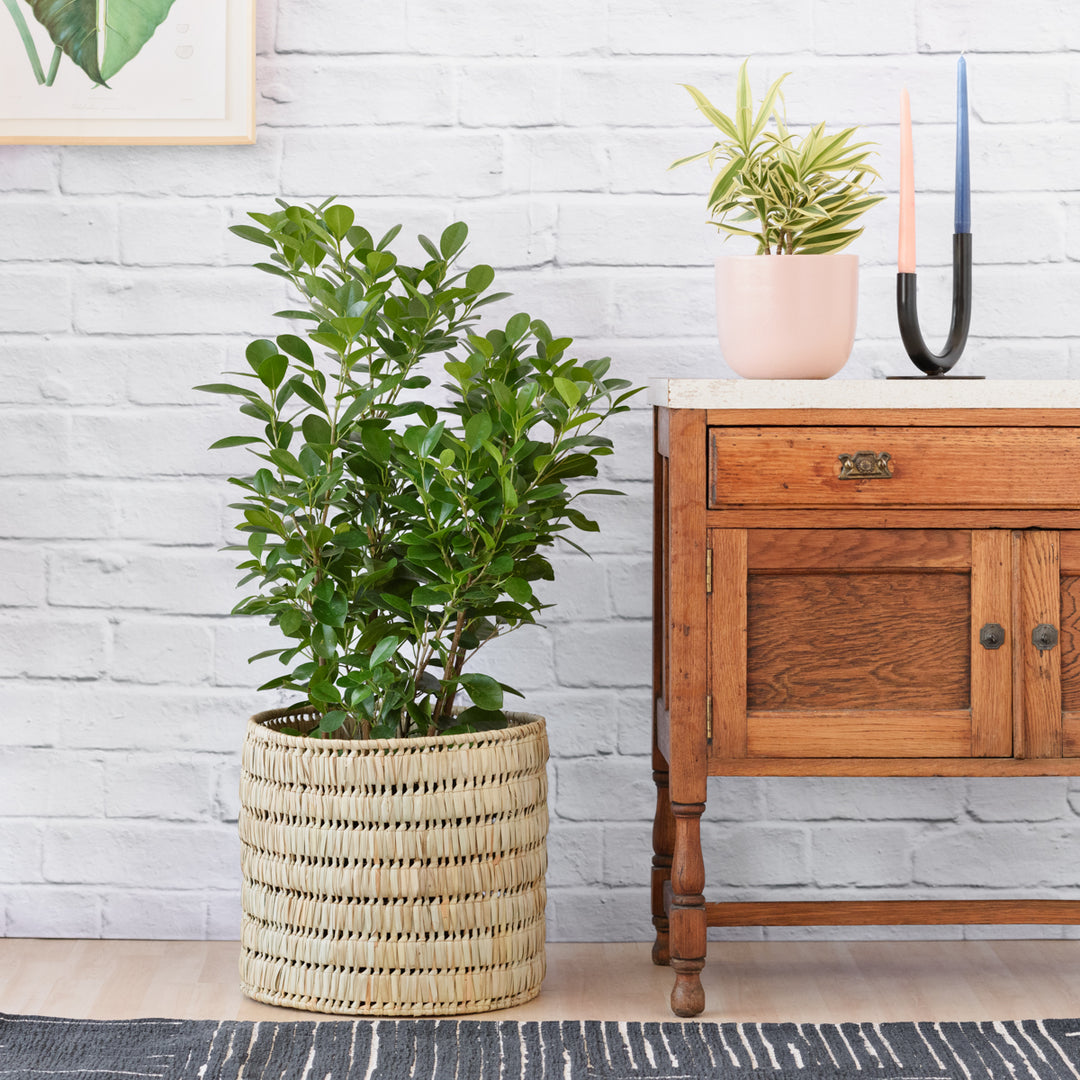
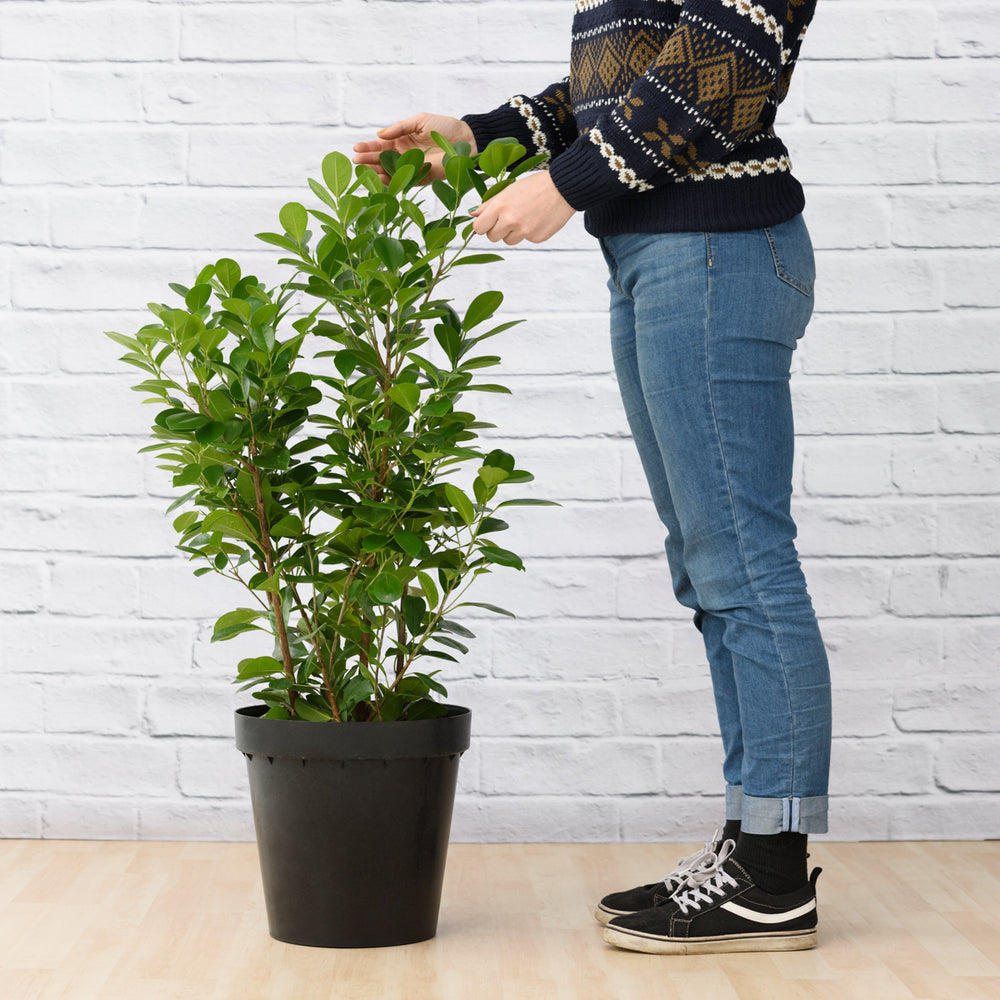
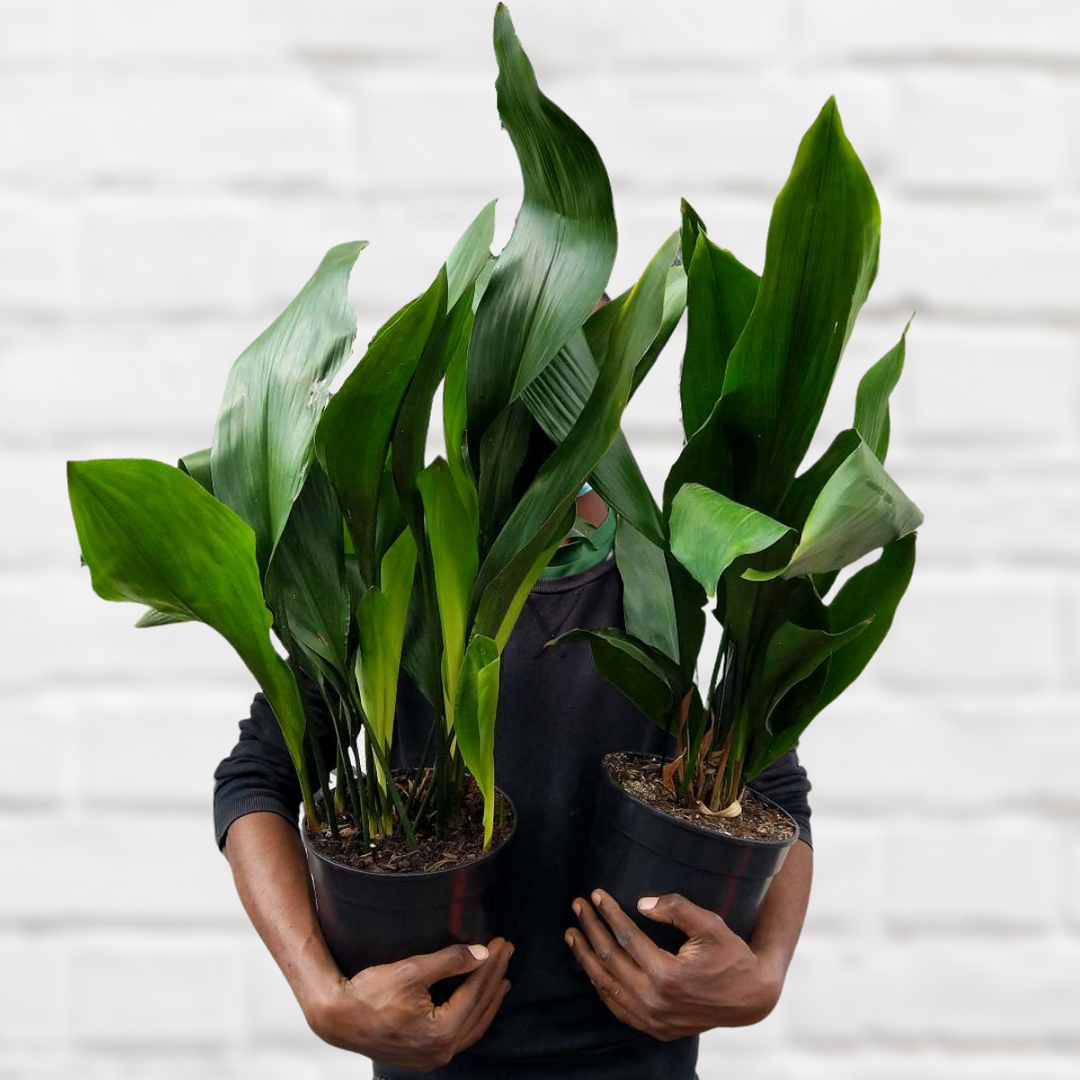
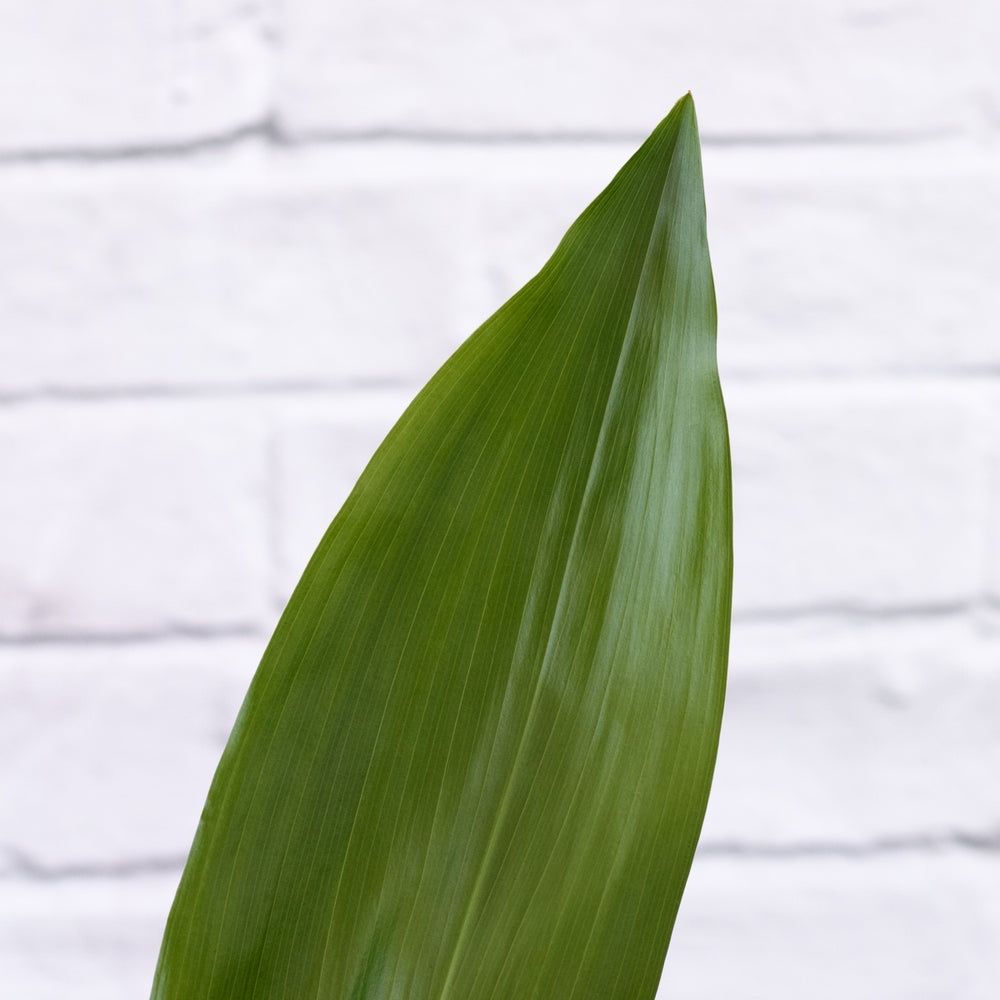
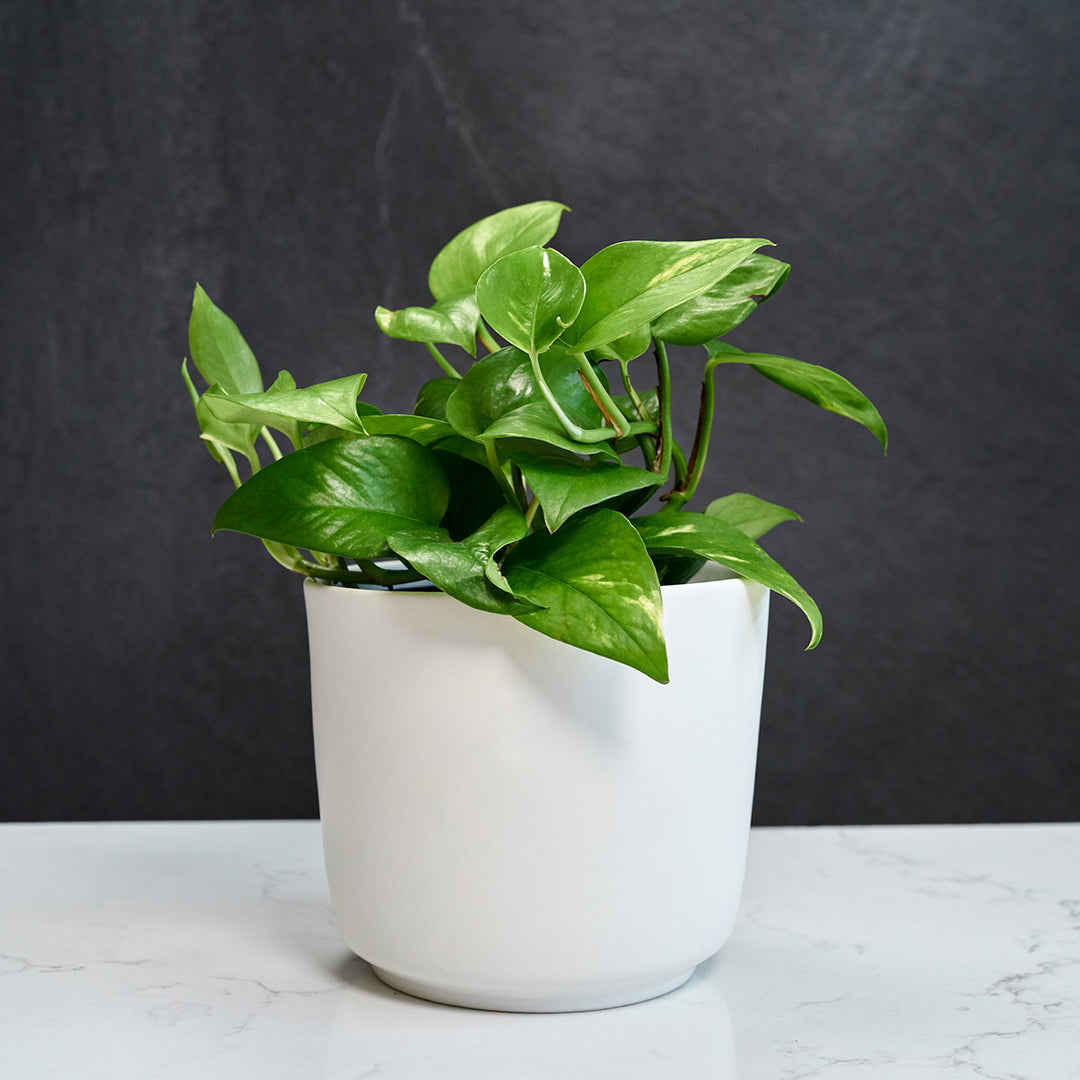
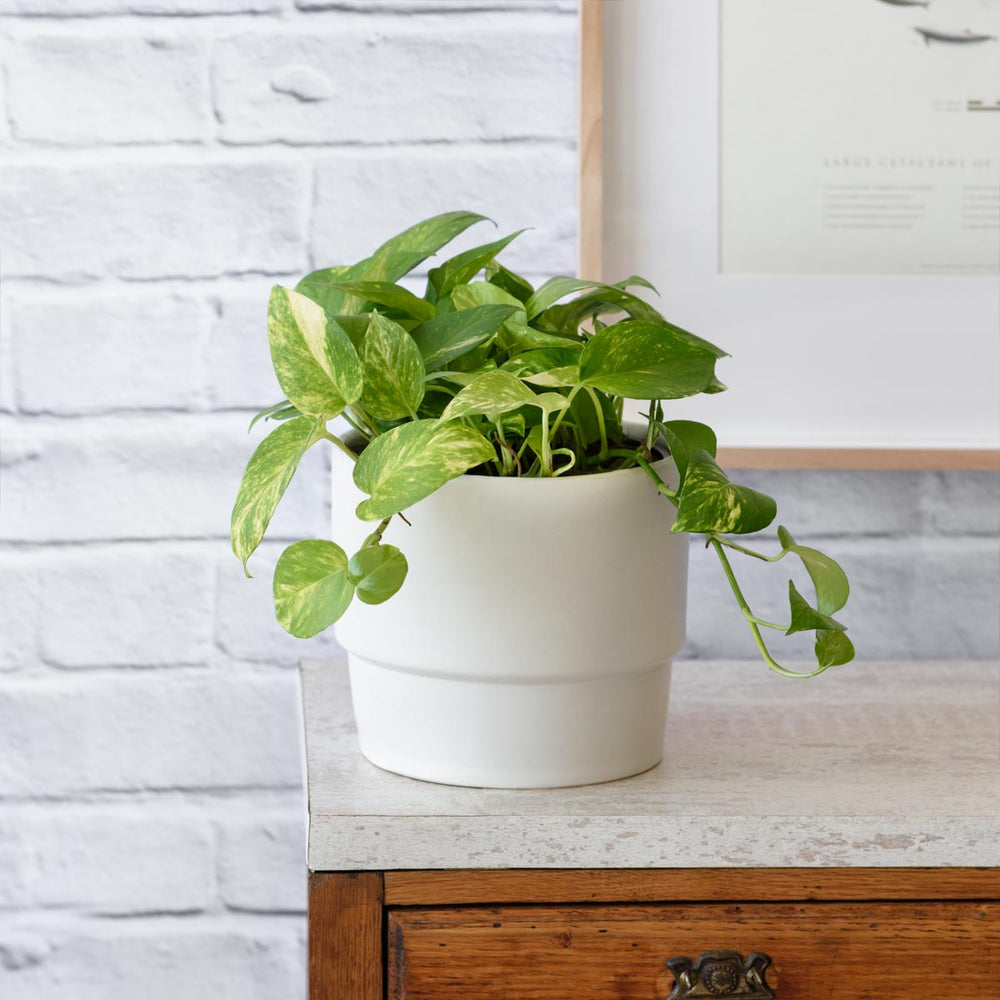
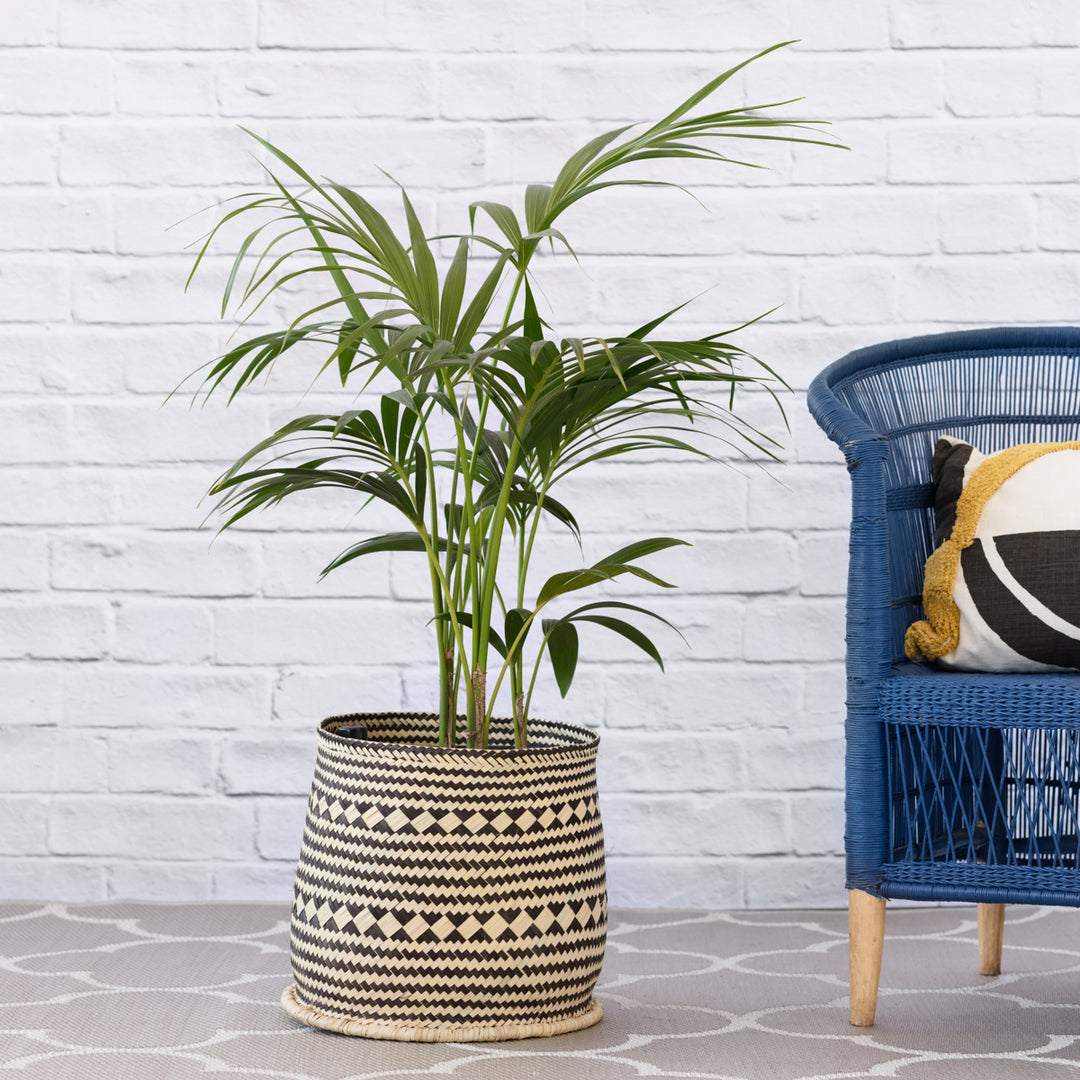
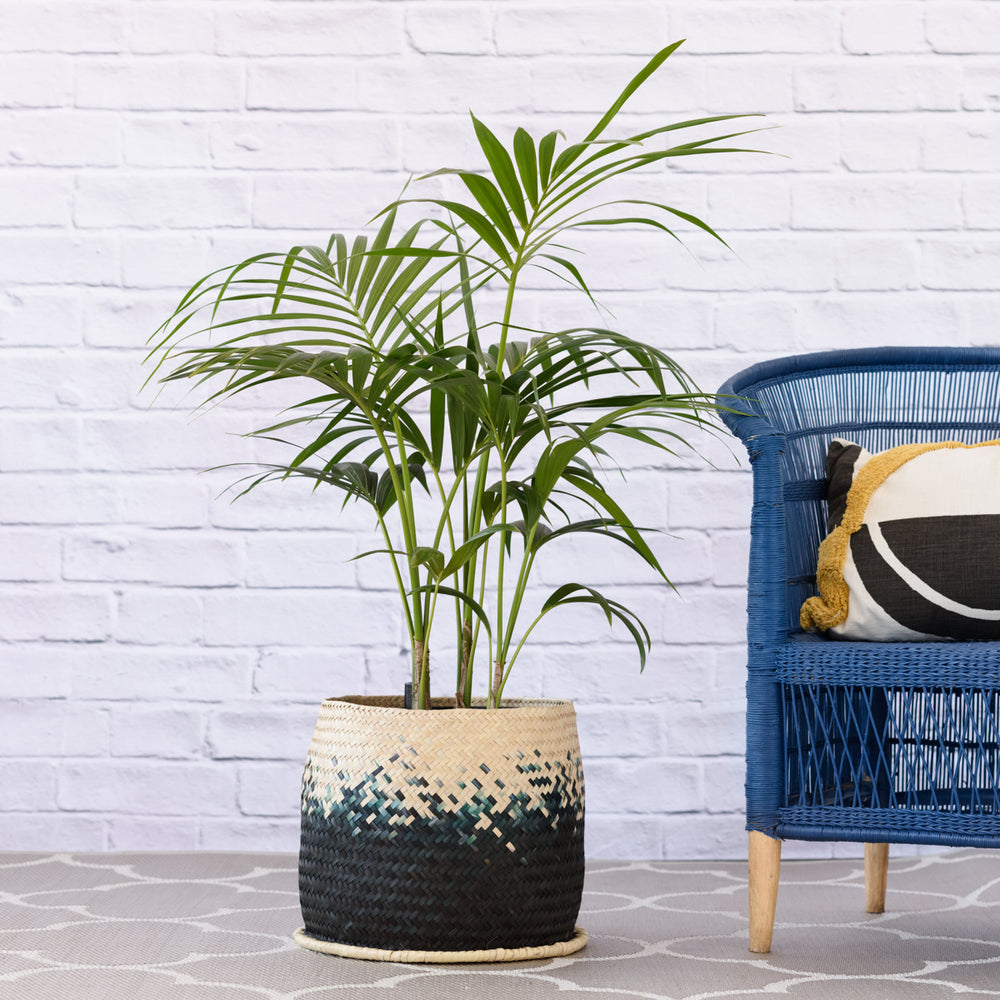


Can I grow Chamaedorea Elegans in water?
I would like to receive more information regarding South Africa’s plants.
Leave a comment